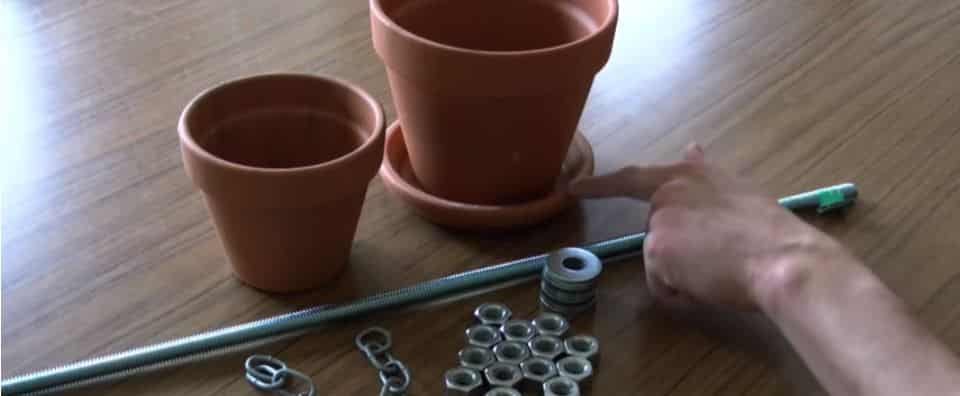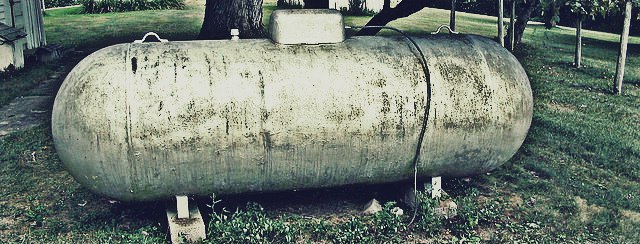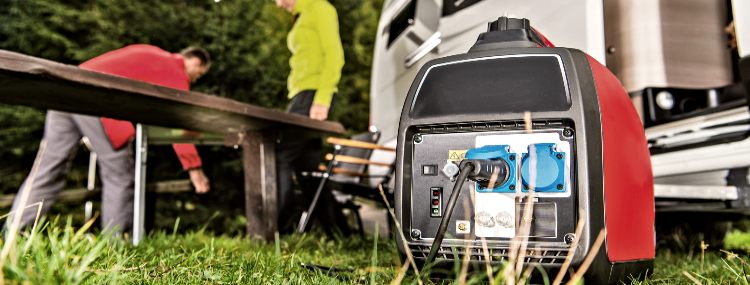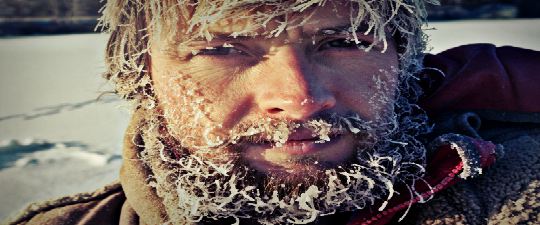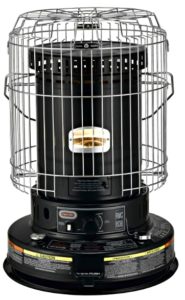
No one wants to be caught off guard when the temperature drops, and I believe that every responsible adult should have backup heat plans ready to go.
But when it comes to staying warm in an emergency, your options range from cheap to expensive.
There’s everything from “barely warm enough to survive”, to systems that are hot enough to thrive in even the most brutal conditions.
The Ultimate List Of Heat Options (that don’t require electricity)
Your Own Body
Let’s start with your meat suit. Your body is a fantastic machine that generates heat as it operates. You need to preserve it at all costs. You also need to generate more heat.
Preserving
Before thinking of generating, preserve what you make first. Bundle up with extra layers of clothing like sweatpants, socks, and sweaters.
- Hats and gloves are essential too.
- Have extra blankets on the bed and ones for the couch.
- Duvets keep the heat in.
Generating
Physical activities like working out or a brisk walk around the house can generate heat. So can frontier lifestyle activities such as chopping firewood or hauling water. Heck, wrestling with the kids or intimacy with a partner will also generate copious amounts of heat.
Combined body heat is an effective way to share yourself by cozying up in a sleeping bag. This works with ANYONE. But it is much less awkward with those you love (like your kids, spouse, or pet).
Remember:
Avoid working out so hard that you get drenched in sweat. The wet body and damp clothes can quickly become counterproductive in the frigid cold.
Eating
Who’d have thought filling your face could keep you warm? Digesting food raises your body temperature through thermogenesis. So eat foods high in carbs, protein, and healthy fats. Add some extra spice to sweat from the inside.
Hot drinks help, too, but they need an external source of heat to make.
Sun Radiation
The sun is your friend and is an integral alternative heat source for power outages. While the sun is out, take advantage of its thermal power during the day. How? By opening up curtains and blinds, so it radiates inside the home. This is when you should charge solar-powered devices—equipment like:
While the sun is shining, open your curtains and let the sun’s rays come through your windows. It’s one FREE way to heat a room without electricity.
Another “trick’ is to fill up all your plastic water bottles and leave them in the direct light. Then bring them inside after the sun fades so they can release that heat slowly over time. This “trick” is even more effective for larger vessels like barrels. Heck, you could even invest in a water wall that passively absorbs the heat during the day and releases it at night.
Stones can also retain heat from the sun if they are adequately insulated. Wrap hot rocks in a towel and put them at the end of your bed to keep you warm while sleeping. The sun is free so take full advantage of it.
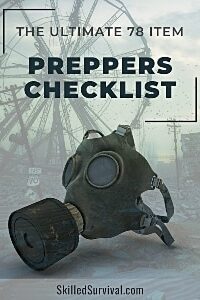
Want a free 78 item preppers checklist?
Enter your email below to instantly download this Complete Checklist PDF. No purchase necessary. 👇 👇Candles
Candles are natural nonelectric heaters that you can buy in bulk or make your own from your beehives. They give you two essential sources for survival; heat and light.
A candle is an essential prepper item you should add to your emergency stockpile. As well as stored in abundance at your home, bug-out location, and DIY bunker. Know this… A candle isn’t going to heat your entire house or cook a steak.
Having said that, any emergency heating is going to help. And you can light up a bunch of candles to contribute to the solution.
Just be safe when using candles, as they are an open flame. Beeswax candles give off a pleasant scent and release negative ions in the room to clear the air.
Lovely smells can become more important the longer you hunker down inside. Coconut wax is a great option. It’s a highly renewable, non-toxic wax and burns cleaner and longer than other wax candles.
Tea candles are handy to stack together to form a more concentrated heat zone. And can be safely used with various holders.
You can also build your own candle heater with tea candles and a couple of clay pots. Check out our article How To Build A Clay Pot Candle Heater and Do They Really Work?
Blankets
Blankets are a bit of a no-brainer, but most people only have one blanket per bed in their homes.
This strategy is a mistake because when the power grids are down, you need extra blankets for beds, couches, and keeping pets warm. But the truth about blankets is that they don’t produce any heat by themselves. That’s your body’s job. Instead, a good blanket will trap the heat your body produces.
There are different materials used in making blankets, and the best for keeping warm are:
- Down Filled – Mature birds have the warmest fill.
- 100% Wool – This comes from sheep, and it’s evolved to keep them warm.
- Fleece- Made of synthetic material to mimic wool.
- Mylar is space-age aluminum and acts as a reflector for body heat.

I tested a TACT Bivvy Mylar blanket in frigid temps in my backyard, and after only a few minutes, I was toasty warm inside.

Outside Temp / Inside Blanket
Honestly, I think EVERYONE should put a TACT Bivvy in their glove boxes for winter car emergencies.
And they’re also a very cheap way to stay warm during a winter power outage as well!
Check out our article 9 Best Mylar Space Blankets On The Market Today
Warmer Packs / Hand Warmers
Several manufacturers make portable body warmer packs, including:
They are great for giving you fast, long-lasting warmth. And these devices can slip inside your gloves, in your pockets, and shoes. Or with some, you can even have adhesive to stick to your back, shoulders, or anywhere else you need them.
Different chemicals inside them react when shaken or exposed to air to produce heat. Some have iron powder or sodium acetate to make a thermal reaction. But they all are safe to use for all members of the family.
You should always have these emergency heater packs on hand. They’re crucial for outdoor winter activities and emergencies. And they’re an excellent backup if the electricity stops working in your home.
There are also portable hand warmers like the:
They can be charged and ready for use when needed. Check out our article 9 Best Hand Warmers For Cold Weather Emergencies
Soap Stone
Soapstone is a natural type of metamorphic rock made primarily of talc. And people have been using it for carving material for thousands of years. Why? Because it’s relatively soft.
Some grades feel like soap, and that’s how it got its name.
Besides its carving ability, soapstone is a fantastic heat retainer. It quickly absorbs heat and radiates it slowly for several hours. Basalt also works similarly. Make your own soapstone bed warmer.
First, drill two holes in the top and bend some sturdy wire to make a pail-type handle. Then you can hang it near the fire or even in a window to absorb heat during the day.
At night, drag it up and down your bed and wrap it in a towel to stay at the bottom, underneath the blankets. This setup will keep you toasty all night.
↓ Survival Heat: Soapstone Warmers
Best Non-electric Fuel Heater Options
You’ll need something a little bigger if you want to heat an entire room without electricity. Several fuel-based heaters do everything from cooking to heating.
They use radiant heat or convection heat and use these different fuels:
Kerosene
These heaters use kerosene liquid to heat quickly. And can provide either radiant or convection heat.
The convection type carries fuel at the base with a combustible chamber. This chamber ignites and heats in all directions through a circular design.
Radiant heaters send their heat straight out using a reflector or blower. You can find kerosene at most home improvement stores. And they use a soaked wick with an ignition starter or a burn chamber where you use a match to light the wick.
↓ DuraHeat Kerosene Heater Review
Propane
Propane heaters come in various sizes and use refillable tanks. They come in canister sizes ranging from 16 ounces to 20-pound tanks in size.
- Smaller units are better indoors and work well moving from room to room.
- Bigger units usually are left stationary for safety, with the tank left outside.
The BLUU propane heater for outdoor and indoor use is perfect for your emergency heat. Or this simple heater mounts to the top of a propane tank.
Check out our article, Kerosene vs. Propane Heaters – The Best Solution For Survival
↓ Best Indoor Propane Heaters
Natural Gas
Natural gas heaters work like propane heaters. But instead of a refillable tank, you can attach the natural gas line from your home.
That is, IF it’s still available in your home after a power outage. You have to attach it to a fixed gas connection in your home.
So it isn’t portable like the propane or kerosene tanks, but you have a steady fuel supply.
↓ How To Install A Dyna Glo Ventless Heater
Biofuel Heaters
Biofuel is any fuel that comes from living matter. It includes wood, ethanol, methanol, biogas, and biodiesel.
They even have tabletop biogas fireplace heaters that look great and heat your space. They require you to fill up the fuel tank, which burns for a long time without fuss.
You can also get reusable biofuel fuel cans for portable heating on the go or in an emergency. They can heat food and provide some warmth, and they are very affordable and portable.
You can even refill them.
Every prepper should have these by the stack and in storage for an emergency.
Butane Heaters
Small portable butane heaters can get you through an emergency power grid interruption.
They provide some warmth and the ability to do some rudimentary cooking. Units like this dual butane and propane heater can provide sustainable heat indoors.
Always make sure to have a well-ventilated area when using this type of fuel.
Solar Heaters
These heaters don’t use combustible fluids. Instead, they get thermal energy from the sun. This device collects energy throughout the day and stores it until needed.
Cold air travels down into the unit and picks up the thermal heat to blow it into your room. They are expensive, but your heat is free once set up.
Fireplace and Wood Stove
Wood stoves are the perfect solution to indoor heaters that don’t require electricity. You’re in business as long as you keep your supply of dried and split wood at the ready.
A standard fireplace is best when designed into a house’s structure. And they usually require the professional skills of a bricklayer. Proper venting, hearth, and mantel are essential components. But your fireplace will mostly radiate heat in the main room.
This design is OK because much air will escape out of the house and up through the chimney.
A wood stove is much better for heating!
And you can also install them during a build, but it is doable to add them later than a fireplace. It just takes a protective floor and wall solution and cutting a hole in the wall or roof to bring the stack outside.
An insulated chimney pipe passes through a home’s framing components; that way, there’s no heat touching flammable material.
A properly maintained wood burner setup can burn all night. Thus, providing all the emergency heating necessary to survive without electricity.
Note: A wood stove is “THE solution” I choose for my family as a backup nonelectric heater!
↓ Heating Your House With A Wood Burning Stove
Backup Generators
Emergency home heating sometimes needs a powerful generator.
A large generator turns fuel and combustion into electrical current to tie into your home. You can install large units on a concrete pad beside your home. These are ready to provide full power to run everything with the flip of a switch.
A standard “camping” gas generator can be stored until needed for smaller emergency heating. It’s easy to run a few power cords to get vital electric appliances and lights on.
You’ll need to refill with diesel, gas, natural gas, or use a solar unit.
A large solar generator is called a power station; you’ll need to pair this unit with solar panels.
Heck, you could even invest in hand crank or pedal crank generators to power a few personal items during a
Check out the following articles for more information:
- Best Portable Solar Generators That Will Make You An Emergency Hero
- 8 Best Camping Generators [With Video Reviews] On The Market Today
- Bluetti AC200P Review: REAL WORLD Tests For Emergencies & Camping
- 10 Best Hand Crank Generators & Pedal Crank Generators For Black Outs
Wind Power
You can similarly harness the power of the wind to solar. Your wind turbine unit can store battery power and then runs some or all of your electrical needs.
If you want to use it to store power for heat, pair it with an electric heater that can plug into the battery system.
How The Body Generates/Loses Heat
Have you ever experienced a power outage in the middle of winter? It’s no summer picnic, that’s for sure.
You start losing copious amounts of body heat fast through:
- Radiation – The body naturally radiates thermal heat. And this electromagnetic radiation moves from hot to cold out of your body.
- Respiration – The air inside your body is warm, and as you exhale, it’s lost.
- Evaporation – As we sweat, our body’s heat is vaporized.
- Conduction – Conduction is the heat transfer from direct contact with another object. The transfer will continue until there the two temperatures are in balance.
- Convection – As air or water moves across our bodies, it draws warm air away, and cooler air replaces it.
Note: If your clothes are wet, the heat loss goes up exponentially.
So avoid being wet in a cold-weather emergency, which includes profuse sweating. Ok, now that you know how your body loses heat, let’s get into the first tasks in an emergency. Reducing heat loss due to unnecessary leakage.
Reducing Heat Loss
First things first, when in a power outage, reducing heat loss is as important as gaining heat. You can’t allow heat to escape from your home and certainly not from your body.
Cracks and holes in your house are where heat escapes. And an open window is like shoveling hot coals into the snow. It’s wasted energy when you don’t have any to spare. Go around and make your home airtight. Use towels along the bottom of doors if you have to.
You must preserve any heat that you have.
Final Thoughts
Disruption to the power grid requires planning, supplies, and equipment. The best options include indoor heaters that don’t require electricity.
Invest in these various nonelectric heater options so you’re never left out in the cold.

Prepare, Adapt & Overcome,
P.s. - I just found out 2 out of 3 Americans don’t feel prepared for a 3 day disaster!!!
I guess this goes to show how modern society continues to embrace ‘living a fragile life.’ What’s crazy is… it’s so easy to fix.
To make sure YOU have the basics, watch our FREE training on “10 Simple Steps To Basic Preparedness” that shows you HOW.
Nothing crazy here… this isn’t doomsday prepping... just the basics every responsible adult should have before a disaster strikes.Why You Can Trust Skilled Survival...
Go here now to review a full breakdown of:
- Who We Are
- Our Credentials
- Our Mission
- & Product Recommendations...
Here are a few highlights of our teams credentials & certifications:
- Certified Member of a Mountain Search & Rescue Organization
- Plant Emergency & Safety Leader for a Major Food Manufacturer
- Member of the 10TH Mountain Division Hut Association
- Certifications: Avalanche 1, WFR, CPR
- Official Gear Tester for Numerous Outdoor Gear Companies
- Countless Multiday Backpacking trips into Remote Wilderness
- Bachelor's Degree In Mechanical Engineering
- Bachelor's Degree In Civil Engineering
- Bachelor's Degree In Biomedical Engineering
"It takes 20 years to build a reputation and five minutes to ruin it." - Warren Buffett
We're fully aware that trust is NOT something you GET but is EARNED.
And we'll continue to earn YOUR trust through our forthright and honest approach with each new Blog Post, Guide & Product we create...
P.s - I just took this FREE 60-second 'Readiness Score Quiz'👇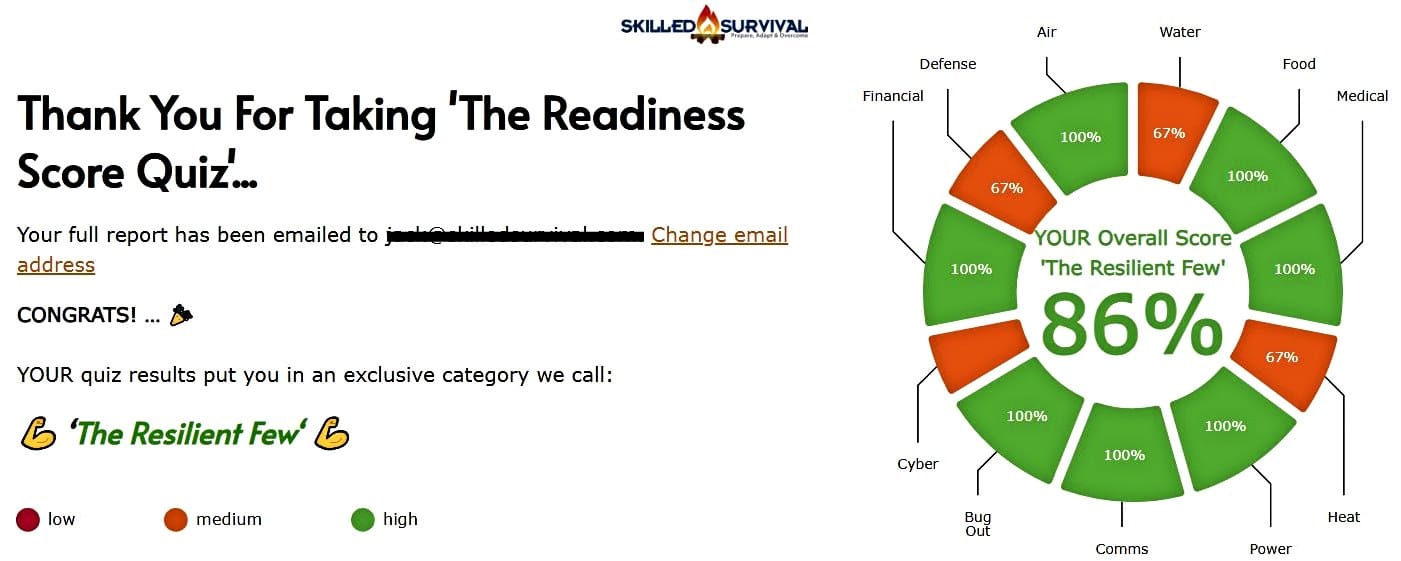
AND... I've still got a few gaps in my preps...🤔 But at least, I'm not part of 'The Fragile Masses'. 👍 Find out where YOU stand by answering a few questions...

Recommended Reading
Long Term Fuel Storage For Survival Emergencies
Long term fuel storage is crucial in emergencies, but fuels must be stored properly especially long term gasoline storage.
How To Store Seeds For Wise Prepping & Survival
When seed saving and seed storage, you must do it right. Learn how to store seeds so they'll thrive the next planting season.
Common Everyday Carry Mistakes YOU Must Avoid At All Costs
The only person qualified to build YOUR Best Everyday Carry (EDC) is YOU. To do it right, you must avoid these common mistakes and pitfalls.
Strategic Relocation: How To Find A Safe Pace To Live
Use strategic relocation to find a safe, defendable location to call home. Your choice of location WILL determine your survival fate.
Nuclear Fallout Map: Would I Survive A Nuclear Bomb?
Have you seen this nuclear fallout map? Or run a nuclear simulation to see the damage a nuke would do to your city? If not, check this out.
Homestead Survival: How To Master Plan Your Safe Haven
Use this simple 6 homestead survival plan to successfully survive (and thrive) even if the world falls into chaos...



